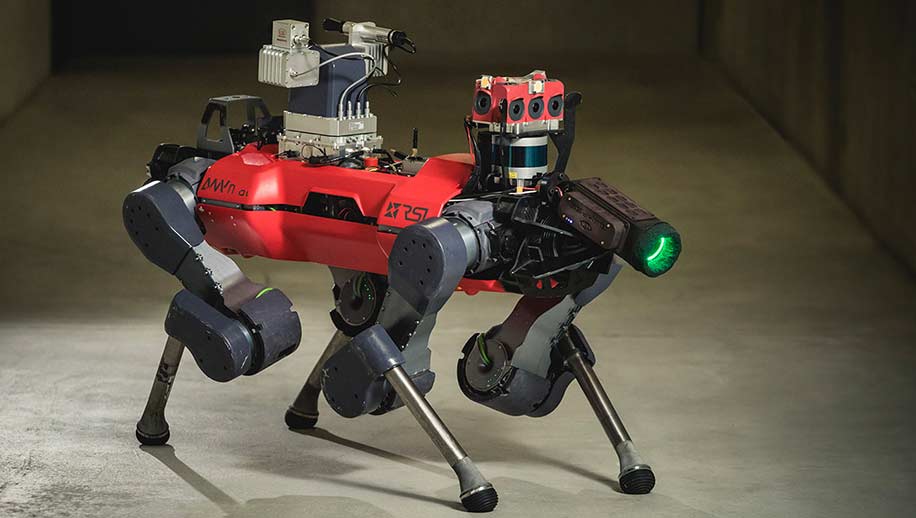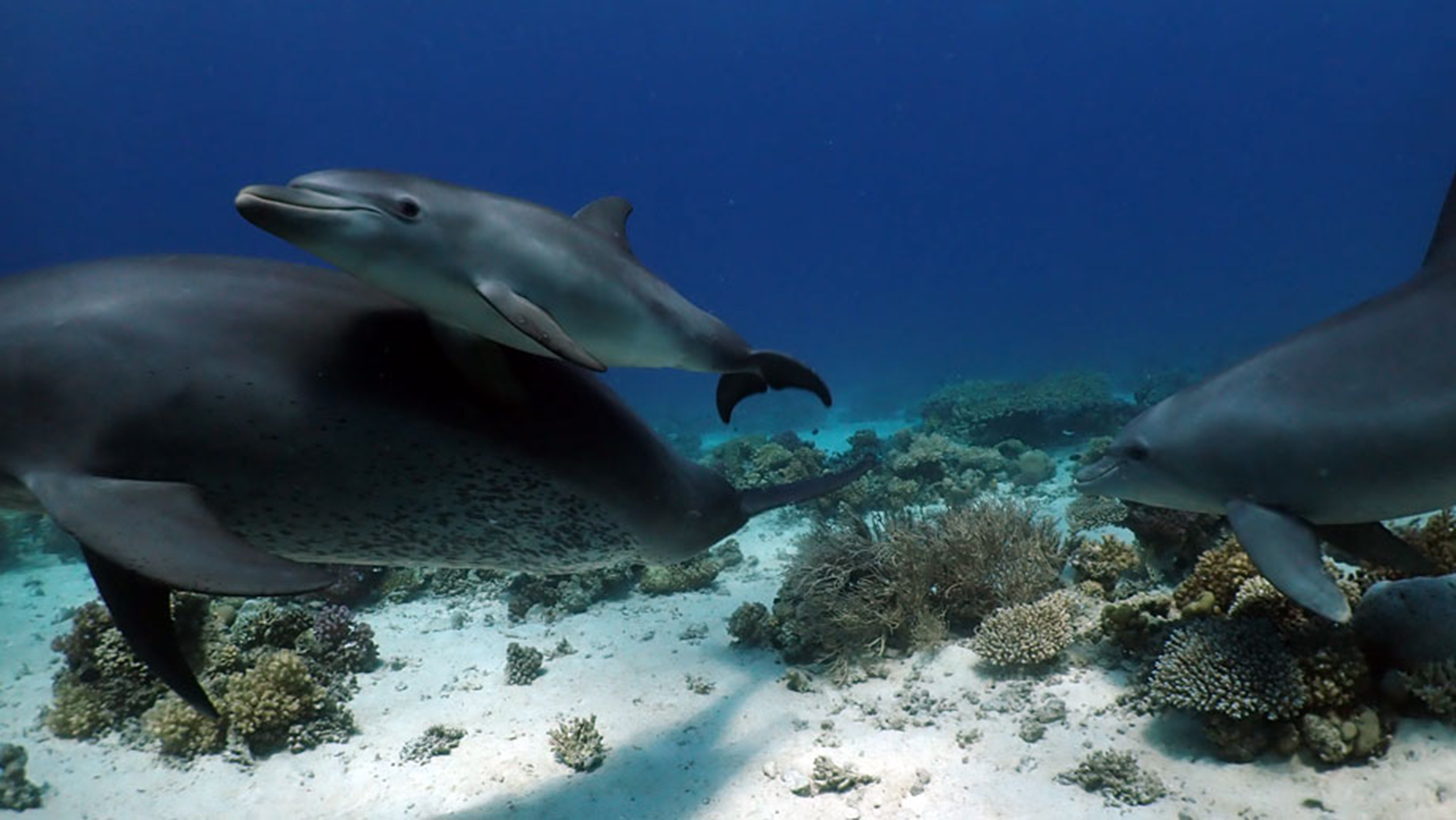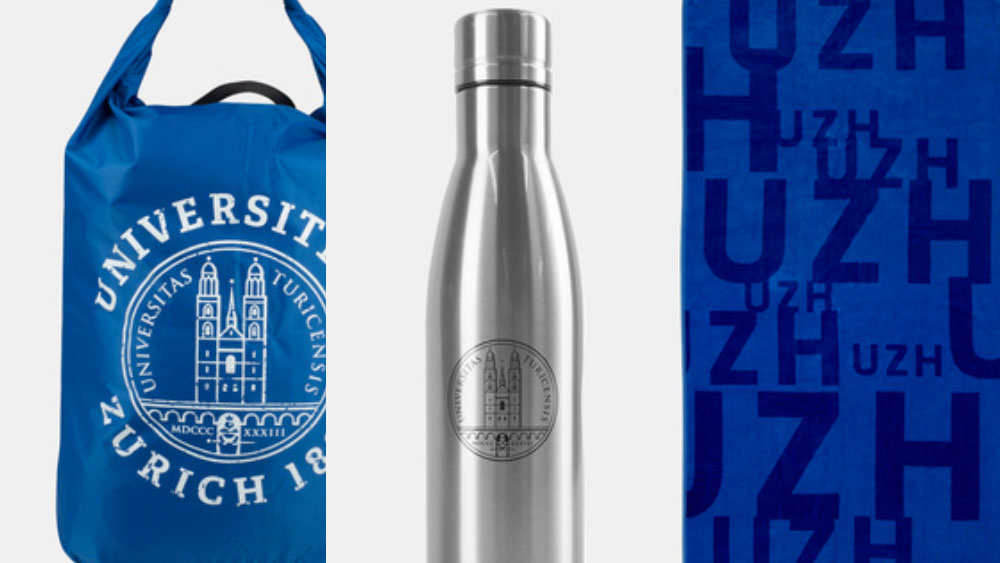Navigation auf uzh.ch
Navigation auf uzh.ch

Pick the correct answer for each question and join the letters together to find the keyword at the end.
Send the keyword to uzhnews@kommunikation.uzh.ch by 1 August. There is only one correct answer per question. Take part for the chance to win a
UZH-branded bath towel, water bottle or dry bag (see below).
1 – A robot dog named GLIMPSE has been developed to explore the south pole of the moon. GLIMPSE is fully loaded with a variety of spectrometers. What are they supposed to measure?
S: The devices are intended to search for traces of life.
C: The devices measure electromagnetic waves.
P: The devices help identify different types of stone.
2 – How we talk about pain depends on the degree of pain we are experiencing. What do we say when something really hurts?
K: I feel pain...
E: I have pain...
L: I perceive pain...
3 – Indo Pacific bottlenose dolphins rub their bodies on coral from the beak down to the tail fins. What do researchers suspect drives this behavior?
P: The dolphins leave scent molecules on the coral, marking their territory.
A: Rubbing themselves on coral activates the dolphins’ metabolism, aiding in their digestion.
R: Dolphins use substances on the coral to regulate the microbiome of their skin, protecting themselves from infection.

4 – The University of St. Gallen (HSG) and the University of Zurich have been offering a joint Master’s degree in Medicine to 40 medical students every year since 2020. What are the new bridge professorships that the two universities created in 2022?
C: “Medical Knowledge and Decision Support” and “Digital Health Interventions”
I: “Big Data in Public Health” and “Medical Humanities”
U: “Medical Innovation” and “Digital Patient Support”
Related article (in german)
5 – The mutation of a single gene can change an entire ecosystem. How did researchers from UZH and the University of California manage to find this out?
M: From a long-term observational study with starfish that adapt very rapidly to climatic conditions.
E: From an experimental ecosystem in a lab with one species of plant, aphids and wasps.
K: From a test farm in California that uses green genetech to promote biodiversity.
6 – Female students have been in the majority at UZH for some years now. But what’s the gender ratio of newly appointed professors at the university?
W: UZH exceeded its target of 40% women appointed as professors for the first time in 2021. (42% female professors)
P: In 2021, UZH appointed more female than male professors for the first time. (51% female professors)
D: Following a peak in 2020 (54% female professors), UZH appointed slightly fewer women than men as professors in 2021. (49% female professors)
7 – Global species diversity can be monitored via remote sensing. How do satellites deliver information about biodiversity?
T: Using imaging spectrometers that measure the reflection of light. This works because plants with similar features and related species have similar reflection spectrums.
J: Using high resolution satellite images that enable the direct identification and categorization of different plant species.
I: Using a technique called density measuring in which satellite images use color to determine how dense objects on the Earth’s surface are; this works since plants with similar features and related species have similar density.

8 – Non-fungible tokens (NFTs) are turning the art world upside down. What is the art world term for NFT works of art that are only available digitally?
V: Nongies
G: Nefts
I: Nifties
9 – Trees plantations that grow several species are more productive than monocultures. Why do trees in multispecies forests have greater yield?
O: Different species use available resources such as light, water and nutrients more effectively.
F: The greater yield is due to having a mix of plants that fix nitrogen and those that don’t.
B: Pests can’t spread as effectively in mixed forests as they do in monocultures.
10 – Light pollution negatively impacts many animal species. What happens to rats when there’s too much light at night?
C: They get lost because they naturally use moonlight to orient themselves.
N: They develop symptoms of depression.
A: They don’t have enough time to hunt prey.
We will publish the correct answers here on August 8.
